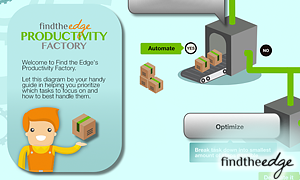 If you're a business leader, you may be interested to learn that only around 20% of respondents to a 2012 Econsultancy survey were satisfied with their online conversion rates.
If you're a business leader, you may be interested to learn that only around 20% of respondents to a 2012 Econsultancy survey were satisfied with their online conversion rates.
If you're one of the eighty per cent, taking steps to improve your site's performance can be incredibly beneficial.
What is CRO?
Conversion Rate Optimisation (CRO) is the simple act of making incremental changes to a website, and then analysing the impact these alterations have.
CRO is nothing new in the online world, but is definitely beginning to gain acceptance as one of the most cost effective ways to maximise your internet marketing budget – especially if that spend is difficult to justify at times.
The real beauty of CRO is that it can be analysed and broken down into easily understandable impact reports. It can also be used to test proof of concept on ideas before implementing wholesale changes that may have a detrimental effect on conversion rates.
Plan to Succeed
Take a moment to think about any approaches you currently take to increase your conversion rates. Are they working for you? If not, chances are you need to think about the nature of ‘the web' and that all important word ‘organic.'
The web is constantly evolving, so it makes sense for your website to evolve as well.
A site needs to change organically to meet the needs of the consumer, and the only way consumers can indicate what’s wrong with a site is by failing to convert. You can drive as much traffic as you like to your site, but any conversion blockers will always win out in the end.
The secret to CRO is implementing well-planned and sustained incremental changes in a logical pattern.
CRO is Not Only Cost Effective, It Works
In the survey mentioned, 70% of the responding companies that adopted a well-structured approach to CRO improved their conversion rates. If you’re a retailer, that means easily increased revenue.
When you consider that this approach to conversion doesn’t require any more advertising spending, may reduce your Pay Per Click (PPC) budget, and will almost certainly decrease your Cost per Acquisition (CPA), it makes the relatively small amount of investment involved seem even more attractive.
Listen to the Customer
The first step is to identify where the current conversion process is failing. Google Analytics can help narrow down the search to specific pages. Using Overlay to identify the routes that customers take is also useful.
Overlay simply shows where a user clicks their mouse, and can be used to map the journey a potential conversion takes through your site.
Once you have identified some likely target areas to start the CRO process on, you need to put together a plan for implementing incremental change. Never assume you know what the problem is to begin with – in the CRO world, everything is up for grabs.
Simply making the call to action bigger may not be the solution if the lack of a visible returns policy is causing the most concern for potential customers.
Look at the size and positioning of elements, then the use of words and imagery. Basically, consider anything you can think of that could feasibly make a difference.
Act on the Information You Have Available
The hardest part of this process is committing to the decision to make change. Often, a website is the end result of a long and expensive process.
There is also the fear of breaking something that is potentially vital to your survival, especially if you only trade online.
Yet the best results almost always come from thinking big to begin with, and starting with changes that can easily be monitored to see whether they have a positive or negative effect.
AB split testing is basically creating two landing pages with the same goal – usually to make a sale or generate a lead.
It's very easy to set up, and the process simply involves sending 50% of your visitors to one page and 50% to another. This makes it easy to see which is most effective.
This type of split testing is the most popular way of achieving quick results from this big thinking approach, and is also the simplest to implement and monitor.
Once the big picture changes have been made, and the results collated, you can begin to whittle down the level of change to smaller and smaller variations, and eventually try multivariate testing.
This is where you make lots of changes on different pages, and carry out many tests concurrently.
Learn to Help Yourself
There are plenty of online tools available for you to subscribe to, such as www.optimizely.com, and these are relatively easy to implement if you have a little knowledge in this area.
These tools can quickly allow you to make simple changes to pages, and track their effectiveness against one another.
Thinking on a long-term basis, you should really consider engaging the services of a professional.
Whether this is one of your in-house team or an outside agency, all of the companies in the study that saw an improvement had a permanent strategy in place, with a financial incentive attached to it.
Remember, if you have a conversion rate of 10%, then nine out of every ten people who view your site are potentially converting elsewhere. Doubling your conversion rate, whilst keeping your PPC and ad spend the same, halves your CPA. The real question you need to ask is can you afford not to invest in CRO?





